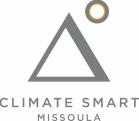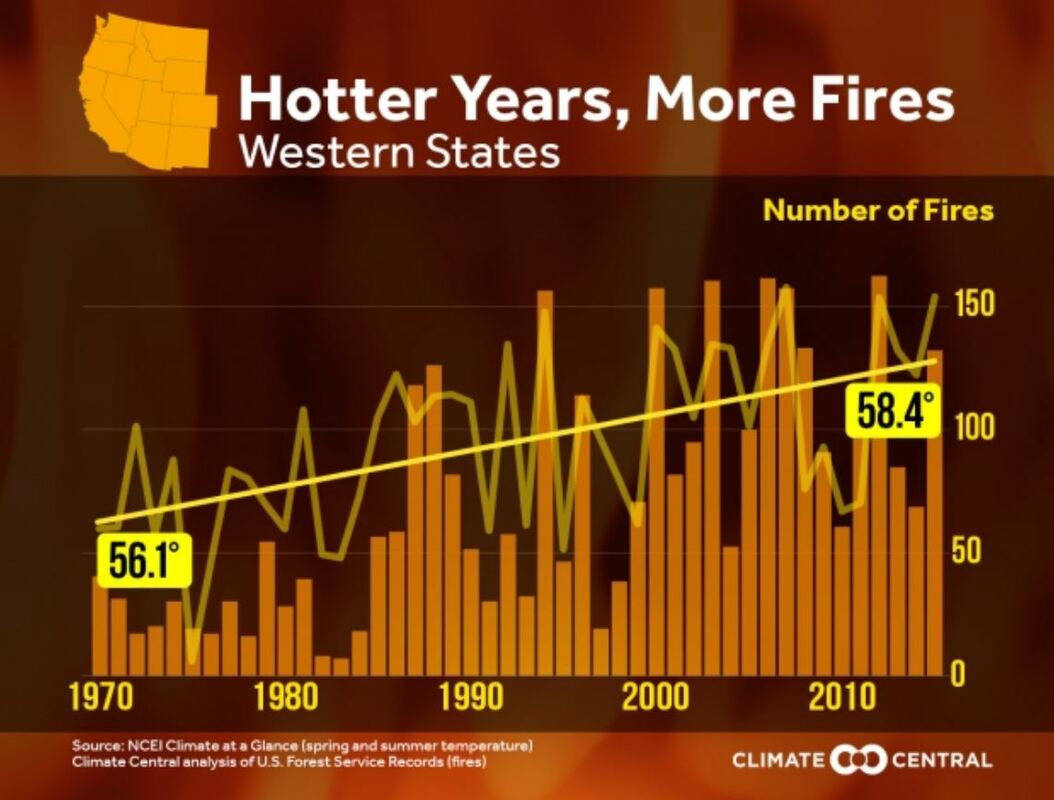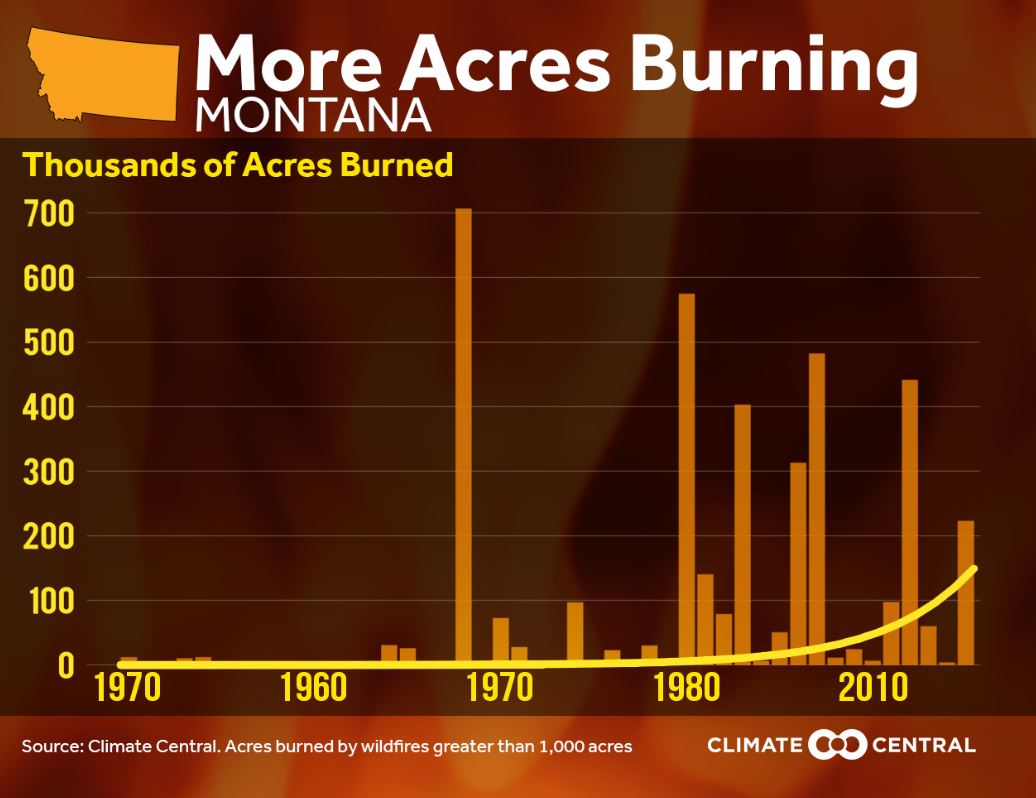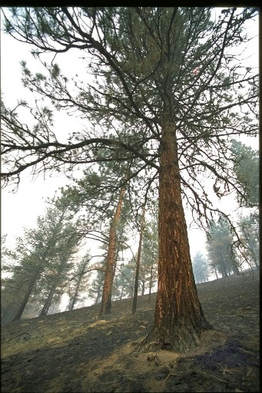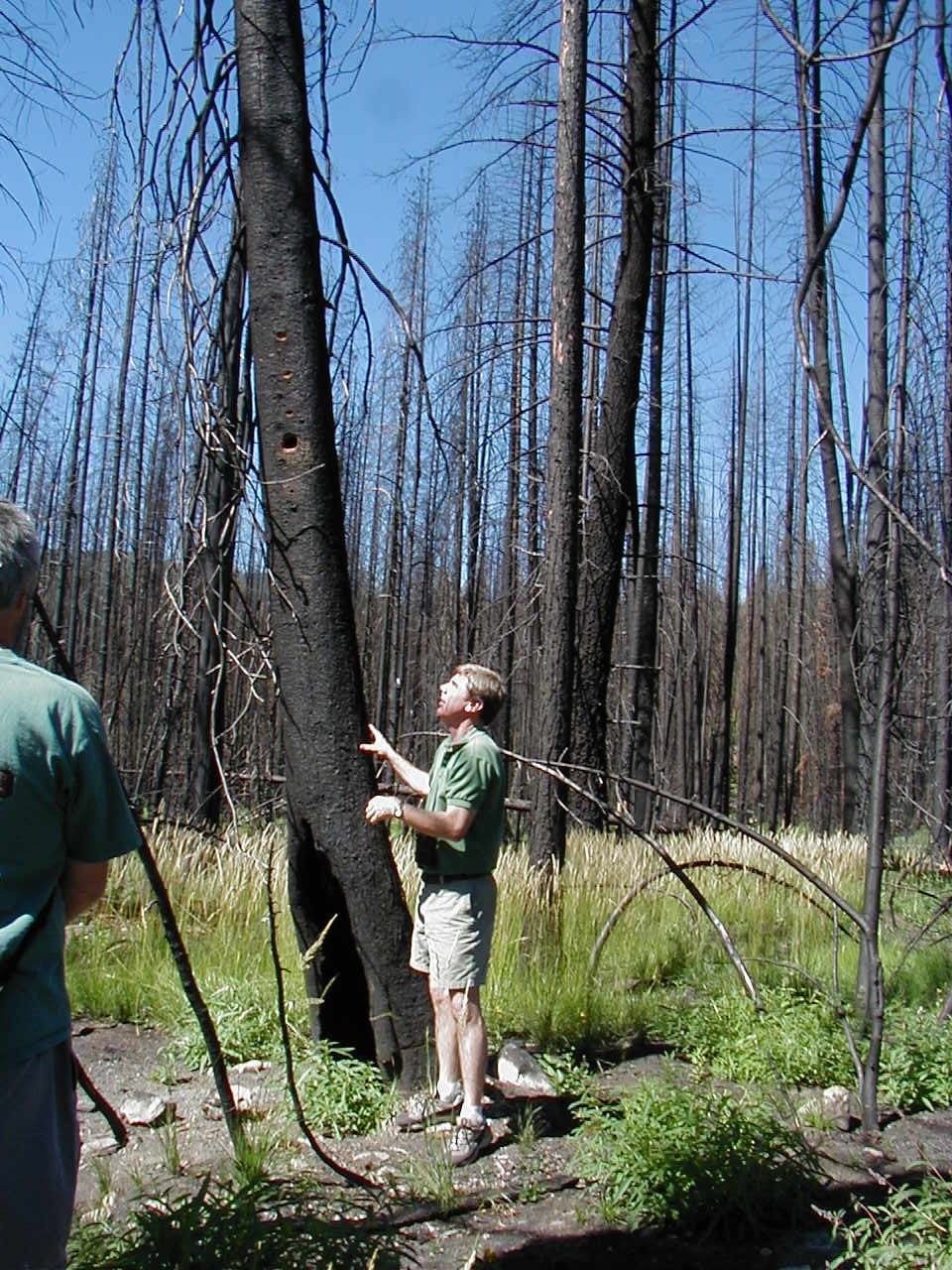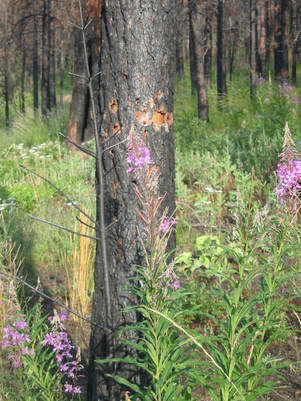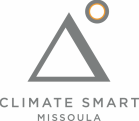|
We live surrounded by fire-dependent forests. Our forests systems evolved with fire, some more than others. Fire is part of what we experience. There's also no doubt climate change is influencing fire severity and the length of the fire season. There's lots of talk about fires, forest management, and what we can do. Some of the discussion is helpful, some ill-informed, some science-based, some not so much.
WILDFIRES: Due to overall hotter temperature and decreased snowpack/precipitation in the West , the amount of wildfires have more than doubled since 1970, and the wildfire season is not an average of 105 days longer. This trend is particularly extreme in the Northern Rockies, where large wildfires are 10 times more common and the area burned is up to 45 times greater. AIR QUALITY: Missoula is situated in a mountain valley, and every night cold air flows downhill and pools in the valley creating a temperature inversion. Air pollutants (e.g. car exhaust and wildfire smoke) get trapped in this cold air and can create unhealthy conditions for hours or days. According to the "Fire Smoke Risk Index", Missoula County is projected to increase from Level 4 to Level 5 (the highest risk) [Fig 1], meaning more frequent and longer periods of poor air quality. This can lead to unhealthy levels of particulate matter that are hazardous to human health. The EPA considers PM2.5 (particulate matter 2.5 microns in diameter or smaller) levels above 35 cubic ft. per air to be unhealthy for sensitive groups. In 2017, Missoula County's worst wildfire smoke season on record, Seeley Lake residents experienced 18 days of hazardous air quality with 24 -hours averages ranging from 252-642 cubic ft. per air. That is around 18 times more than the healthy level of particulates. The American Lung Association ranked Missoula 10th worst out of 186 US cities in terms of number of days with high PM 2.5 concentrations, earning us a grade of “F” To learn more about the the health effects of wildfire smoke check our Wildfire Smoke page |
Here we provide some smart and at times provocative opinion pieces and articles that help shed light on the interplay between forests and fire and global warming and us. It's complicated.
2019 news:
2018 news:
2017:
Check out the just-released Montana Climate Assessment. See especially thechapter on Forests.
The Missoulian (Oct 8) reports: More logging and thinning to battle wildfires may just burn taxpayers dollars
We also really appreciate this new-ish website: TREESOURCE.org, especially this article:
Headwaters Economics has a new and timely study, as reported by Montana Public Radio:
2019 news:
- Climate change threatens Montanans' health, researchers say. Bozeman Daily Chronicle. Feb 28.
2018 news:
- Climate change is making wildfires more extreme. Here's how. PBS. Aug 6.
- UM ecologists: Forest Service should use wildfires to thin, restore forests. Missoula Current. Sept. 5.
- Climate Change, Wildfire, and the Future of Forests. Outside Magazine. April 18.
2017:
Check out the just-released Montana Climate Assessment. See especially thechapter on Forests.
- The Missoula Current (Sept 20, 2017) has a recap: Montana Climate Assessment: warmer temps, lower snowpack, longer growing season.
- The Missoula Current (Sept 25) has a recap of this section: Scientists: Weakened by past management, Montana forests face effects of climate change.
- Three of the authors of the Assessment penned an op-ed that is fantastic:Wildfires, the smoking gun of western climate change?
The Missoulian (Oct 8) reports: More logging and thinning to battle wildfires may just burn taxpayers dollars
We also really appreciate this new-ish website: TREESOURCE.org, especially this article:
Headwaters Economics has a new and timely study, as reported by Montana Public Radio:
